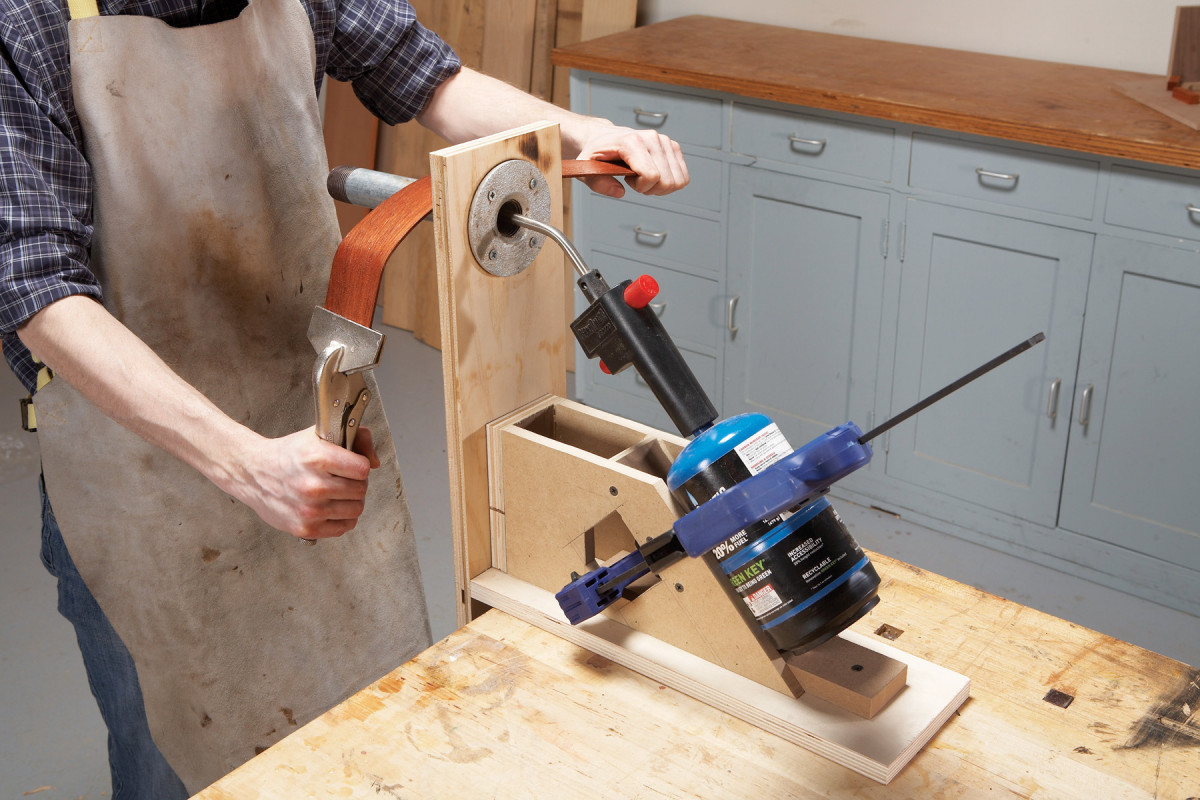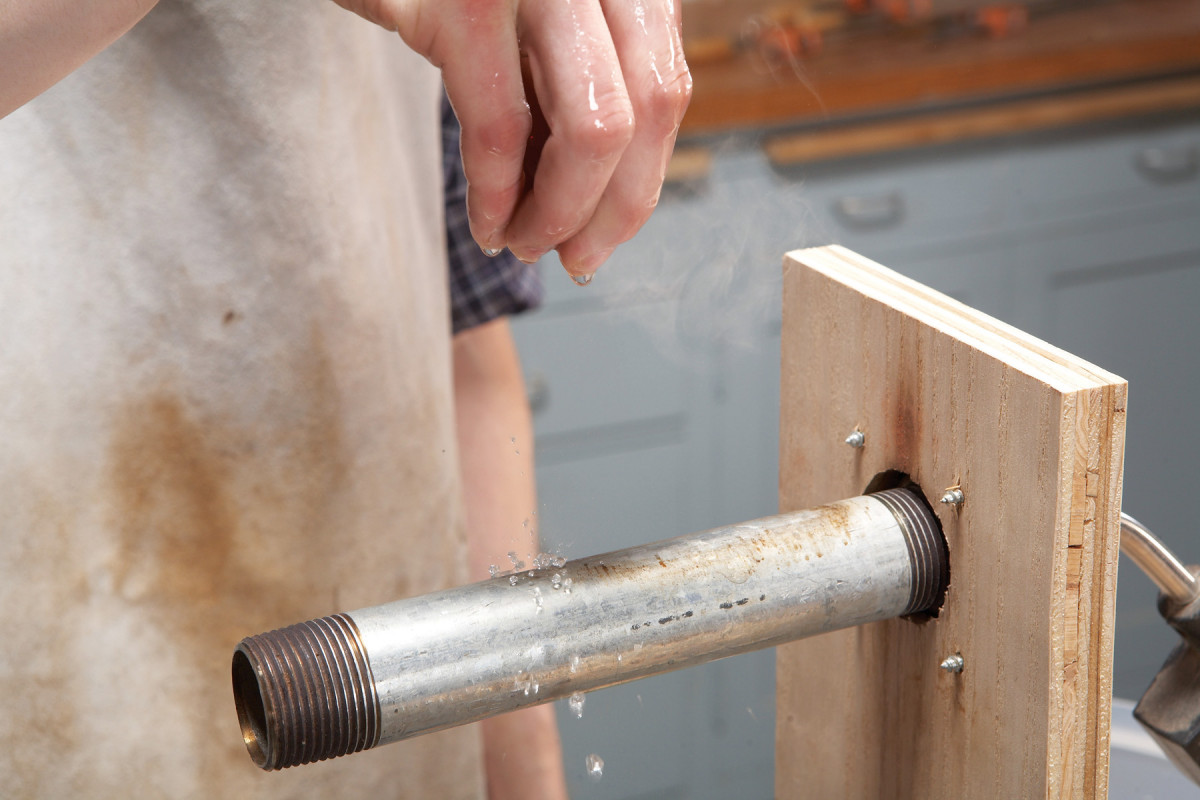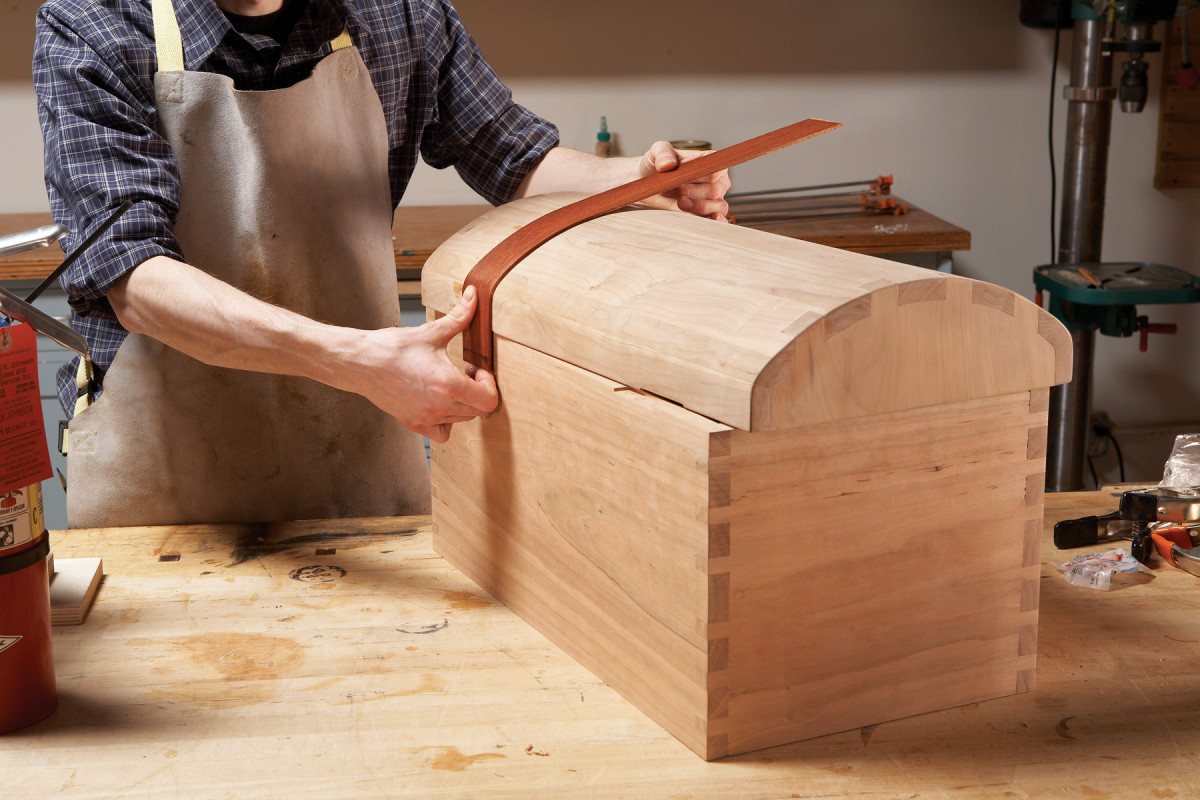We may receive a commission when you use our affiliate links. However, this does not impact our recommendations.

Shape wood with a propane torch.
Here’s a simple, but effective way to bend thin stock (1/4″ thick or less). The only tools you need are a length of 1-1/2″ galvanized pipe, a propane torch, a jig to hold them both, and a fire extinguisher–just in case. The pipe is attached to a flange through a hole in 3/4″ plywood. A jig securely holds the propane torch (Photo, above). This jig rests on the bench and clamps in a vise.
Any woods that take to steam bending are suitable for hot pipe bending, including oak, ash, elm, hickory, beech, birch, maple and walnut. Although there are exceptions, most softwoods and exotic woods are not good candidates. In general, air-dried wood bends more easily than kiln-dried wood. Kiln drying “sets” the adhesive compound between the wood fibers (called lignin) in a way that makes it resistant to the softening effects of heat and moisture. This doesn’t mean kiln-dried wood is impossible to bend; bending it is just more difficult.
Always start by making test bends, using extra pieces from the same batch of blanks that you’ve prepared for the real McCoy. Having plenty of extra blanks is important, because you never know where a hidden weakness might lie, and watching a piece break when you don’t have a spare is a real bummer.
Soak in water overnight the pieces that you plan to bend. If you don’t have a large enough container to completely immerse the pieces, wrap them in a soaking-wet towel sealed in a plastic bag.

The pipe is ready when water droplets bounce off the surface. If the droplets stick and boil, the pipe isn’t hot enough.
Ignite the torch, adjust the flame to low, and clamp the torch into position on the cradle, with its nozzle 1″ or so inside the pipe. It will take a few minutes for the pipe to get sufficiently hot. Test by dripping water onto the pipe. If the water boils in place, the pipe isn’t hot enough. When the water skitters off, you’re good to go.

This bending method resembles blacksmithing, because each piece is shaped to fit, one curve at a time.
To create a tight curve, slowly rock the strip against the hot pipe with a seesaw motion and apply steady, gentle pressure until you feel the wood relax. Then increase the pressure. When the bend is near the end of the strip, hold the strip with Vise-Grip pliers to protect your hand from the hot (really, really hot!) pipe. To create a larger, more gradual curve, move the strip along the pipe in 1/2″ increments, applying five to ten seconds of pressure in each spot, just enough to feel the slightest bend. Check the fit as you go. To unbend a curve that’s too sharp, simply flip the strip over. To make S-curves, work both sides of the strip.
To keep from scorching the wood, lift the strip off the pipe every fifteen seconds (or any time the surface near the pipe begins to look dry) and quickly rewet it with a sponge before continuing. A little scorching is okay if the damaged surface will be hidden. But scorching can also ruin a piece; at the very least, it’ll require additional sanding.
As with steam bending, springback is likely to occur as the pieces dry. How much the piece moves depends upon a number of factors, including the type of wood used, the character of its grain, and the whims of fate.
Here are some supplies and tools we find essential in our everyday work around the shop. We may receive a commission from sales referred by our links; however, we have carefully selected these products for their usefulness and quality.









I’d be a bit careful about using a galvanized pipe and heating it up with an open flame. The fumes are a known issue in welding.
https://galvanizeit.org/knowledgebase/article/can-you-weld-galvanized-steel
“Welding galvanized steel should always be done in well-ventilated locations to prevent the inhalations of fumes, due to the potentially toxic nature of lead and zinc.”
Although the situation here is less heat than welding, there is still a likelihood of zinc fumes depending on the amount of heat used.